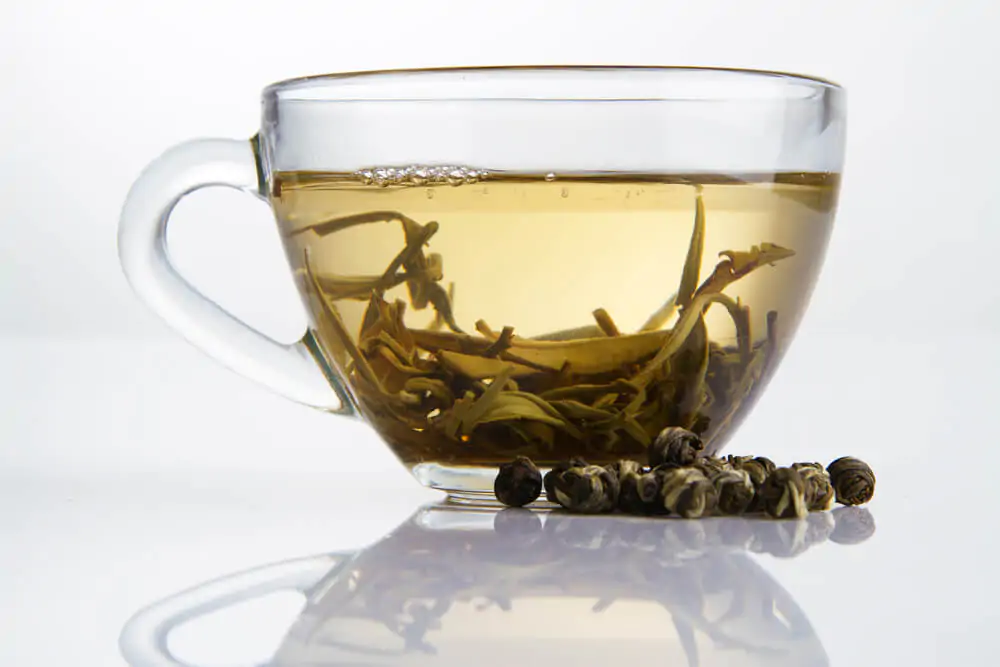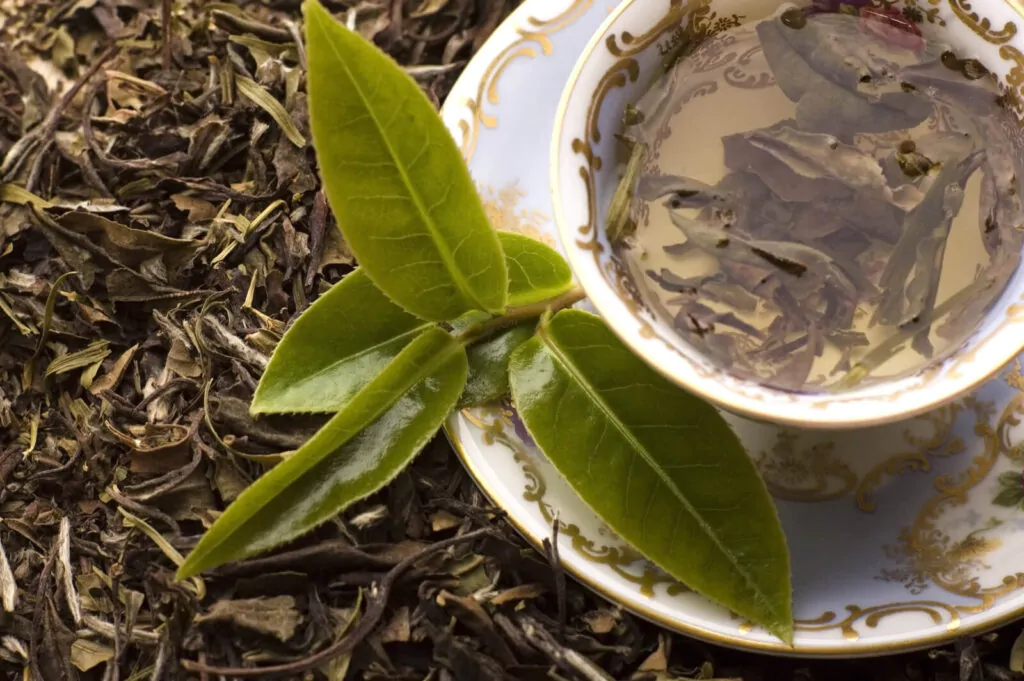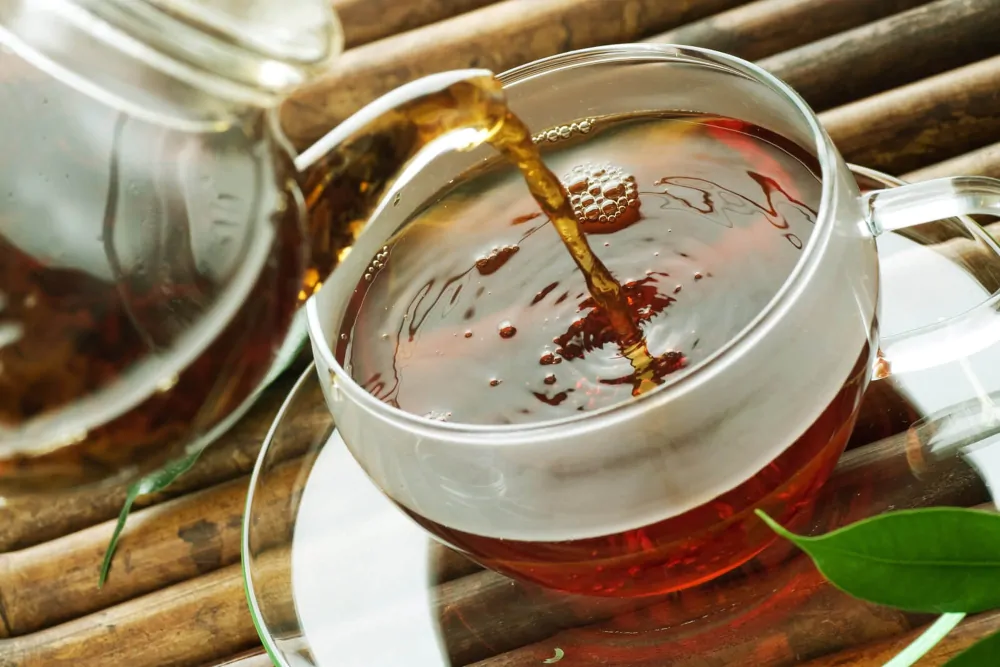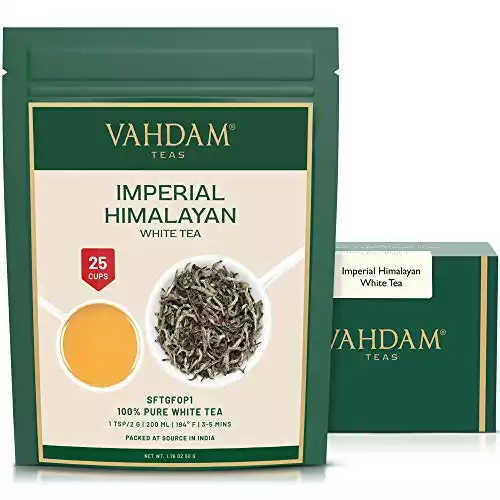This article answers, “How much caffeine is in white tea?” and gives tips on how to keep the amount of caffeine in your white tea to a minimum.

I like to have a cup of tea at various times during the day. It is soothing, relaxing, and a welcome break from coffee. Although I enjoy a cup of joe, my body can only take so much caffeine.
I limit myself to two cups of coffee a day. When I have tea, I want it to have the minimum amount of caffeine.
I always assumed that white tea is low in caffeine. But after further research, I have discovered that the matter is not so straightforward. White tea has caffeine, and it is not decaf unless it says so on the package.
But if you are like me, you do not like the taste of decaffeinated products. Fortunately, there are other ways to minimize the level of caffeine in your white tea. You might be interested in reading about how much caffeine in tea.
How Much Caffeine Is In White Tea? Ways to Reduce Caffeine
A cup of white tea can contain between 6 to 75 milligrams of caffeine. Here are a few ways to keep this amount on the lower end.
1. Brew whole-leaf tea
Whole leaf white tea is widely available. The loose leaves in these packages contain much less caffeine than tea bags.
The Himalayan White Tea contain the Highest Amount of Anti-Oxidants & Flavonoids, more than even Green Tea, Black Tea or Oolong Tea. The tea contains very low-caffeine & can be consumed anytime of the day. Grown in very small quantities exclusively for Vahdam Teas, a tea worth tasting. Unlike white tea bags or organic white tea, this white loose leaf tea is the healthiest tea type and makes for a great Kombucha tea & Iced tea.
2. Purchase white tea from Fujian, China
White tea has its origins in Fujian, China. Studies have shown that the tea grown there is naturally high in antioxidants and that it has much lower levels of caffeine.
Most of the packages that are branded as white tea are not traditional. They are processed from different types of tea plants. The white tea from Fujian is derived from tea plants that were used in the original.
3. Drink fewer tippy teas

If you use tea buds or tips to make tea, then you will consume more caffeine. It is better to go with late-harvest tea leaves.
4. Drink blends
You cannot go wrong by drinking white tea blends. For example, white tea blended with peppermint will contain half the caffeine of an unblended package.
However, you should be careful with green tea, black tea, and oolong tea. These all have much higher levels of caffeine than white tea. If any one of these is in your blend, you will significantly increase your intake.
5. Brew the tea correctly

If you are using loose leaves, then you should brew them at 190 degrees for no more than 4 minutes. The time and temperature at which you boil your leaves may not seem important, but the longer you brew your tea, and the higher the temperature at which you do so, the more caffeine will be in your cup.
6. Re-use your leaves
This is one of the best ways to reduce the level of caffeine in your white tea. Instead of buying fresh leaves, you can re-brew the same leaves several times. The caffeine levels will go down quite precipitously after the first infusion.
You’ll love these white tea brands.
7. Drink decaf if you must
You may want to keep a package of decaf around just in case you cannot find any of the other products described above or you need a fast brew.

